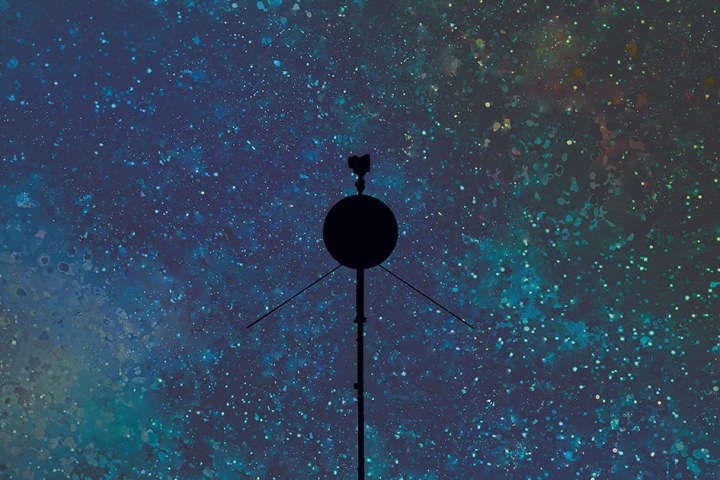
For years, scientists have tracked charged particles as they zoom through the cosmos, using deep space probes to measure the particles’ paths and mapping algorithms to translate the data into musical scores. Now a team of space-music buffs have premiered a new composition to celebrate one of NASA’s most ambitious missions using measurements from mankind’s most distance creation — the Voyager 1 spacecraft.
The composition was created by Domenico Vicinanza, a researcher at GÉANT, and Genevieve Williams of the University of Exeter. Together they turned forty-years of cosmic data into a three-minute score, featuring instruments like a violin, flute, French horn, and glockenspiel. It was recently premiered at the SC17 Supercomputing Conference in Denver, Colorado.
“As scientists we are intrigued and fascinated by the universe around us,” Williams told Digital Trends. “And we have a passion for space and space exploration in particular.”
“Space data arrives at NASA’s Space Physics Data Facility as numbers, not orchestral notes.”
Launched by NASA a little over four decades ago, Voyager 1 now throttles away from Earth at 17 m/s, carrying equipment that still manages to relay information to Earth despite being past its prime. After completing its primary mission in in 1980, the spacecraft embarked on an extended journey through the Solar System that would see it enter interstellar space and become to first probe to beam back data on from the medium beyond.
But this information arrives at NASA’s Space Physics Data Facility as numbers, not orchestral notes. To turn the data to music, the researchers use a process called data sonification.
“Sonification is the translation of information like numbers and scientific measurements into audible signals, like sounds, music notes, or melodies,” Williams said. “It is based on mapping certain characteristics of the initial information to audible parameters, for example the larger the number, the higher the pitch of the note.”
In the case of the Voyager 1 data, Vicinanza and Williams used an algorithm to map the time between measurements made by the spacecraft’s Low Energy Charged Particle (LECP) detector to intervals between notes on a scale. Increasing data became increasing pitch. Decreasing data became decreasing pitch.
“In this way the music inherited the structural characteristics of the data, its regularities, its character, its behavior,” Vicinanza said.
The idea that space holds music dates back at least to medieval Europe, and was explored by Johannes Kepler in Harmonices Mundi, in which the astronomer mapped the velocity of planets to pitches in order to express their elliptical orbits.
“What we did with Voyager 1 data is really similar to what Kepler did,” Vicinanza said. “Our sonification is based on the measurements coming from the LECP, mapping the number of particles that reached the detector to sound. The higher the count, the higher the pitch. Every number from the detector becomes then a music note, creating a melody that follows the entire journey of the spacecraft.”
As a result, the score depicts Voyager 1’s journey, including its dramatic approaches to Jupiter and Saturn, and entrance into interstellar space. Like Kepler, Vicinanza and Williams hope their composition helps colleagues — and laypeople – appreciate and better understand the workings of the cosmos.
This isn’t the first time Vicinanza has turned science data into sound. In 2012, he transformed data about the Higgs Boson particle discovery into a musical motif, and a few years ago he created a separate composition from Voyager 1’s 37 years of data.
But the spacecraft won’t be able to beam back information forever. At some 140 astronomical units from the Sun, Voyager 1 can no longer rely on solar power, and its generators are only expected to last until about 2025. At that point, the probe will truly go silent.



